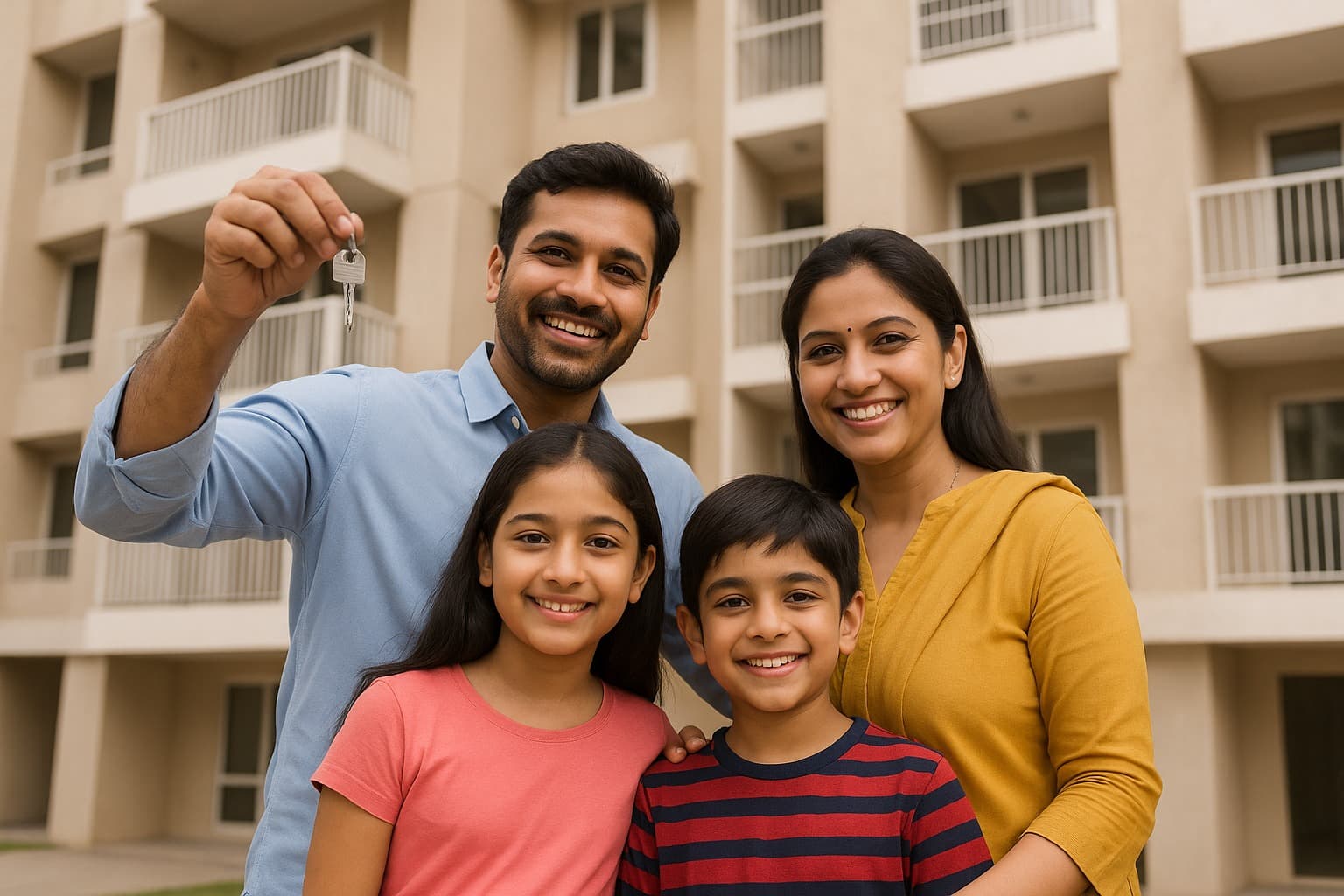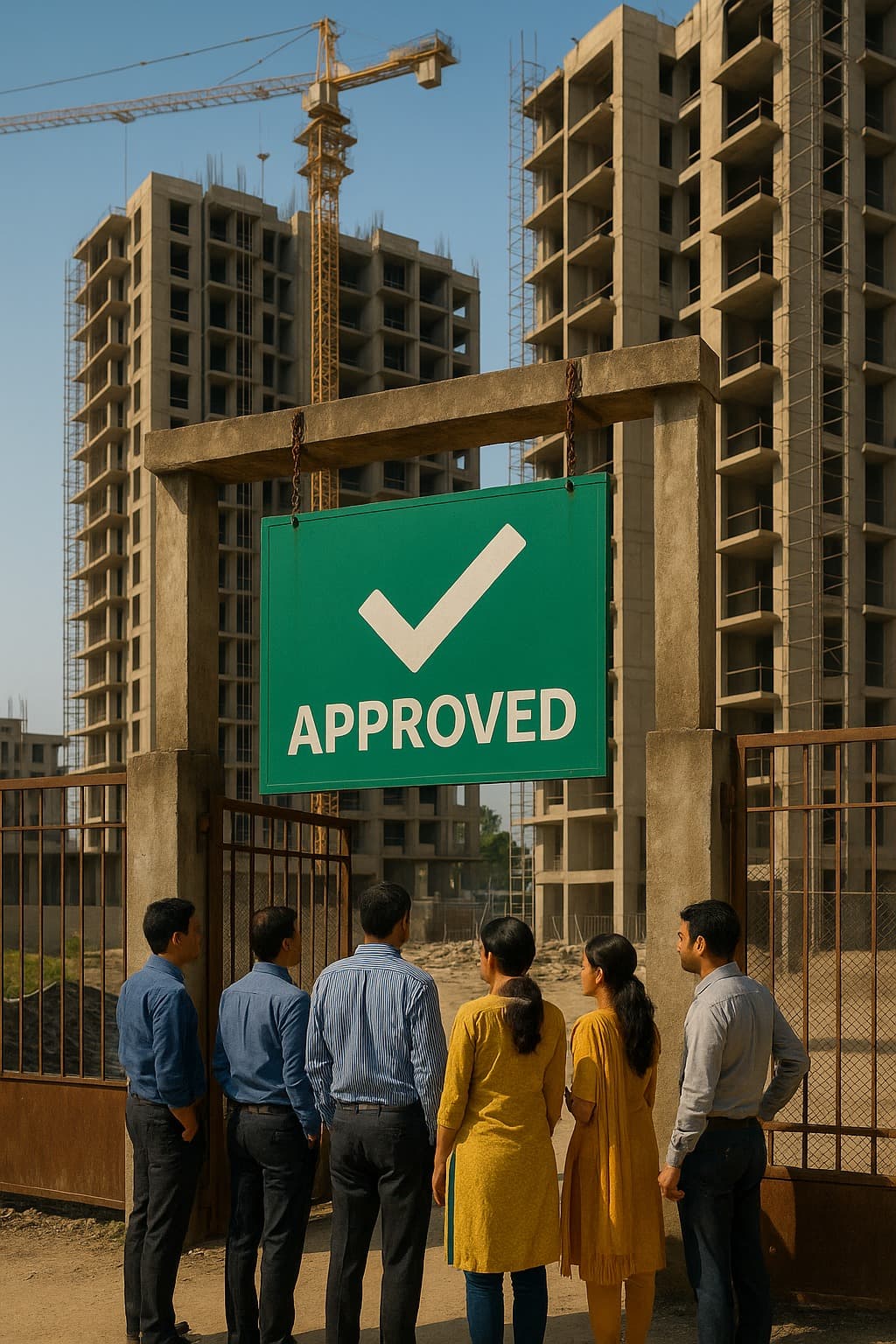MHADA to Construct 8 Lakh Affordable Homes in Maharashtra: A Detailed Overview
Summary
MHADA will construct 8 lakh affordable homes in Maharashtra over five years, addressing housing shortages and boosting economic growth. The initiative aims to provide accessible, quality housing with modern amenities, promoting social equity and urban development.

MHADA to Construct 8 Lakh Affordable Homes in Maharashtra Over Next Five Years: Deputy CM Eknath Shinde
Maharashtra’s Bold Step Towards Affordable Housing
In a landmark move that promises to reshape the housing landscape of Maharashtra, Deputy Chief Minister Eknath Shinde announced that the Maharashtra Housing and Area Development Authority (MHADA) is set to construct 8 lakh affordable homes over the next five years. This initiative comes at a time when soaring real estate prices in Mumbai, Pune, and other cities have made homeownership increasingly elusive for middle-class families. For many citizens, this plan represents more than just a roof over their heads—it’s a dream, a lifeline, and a chance to secure a stable future.
Affordable housing has long been one of the biggest challenges in Maharashtra. Urban migration, booming populations, and rapidly increasing property costs have left middle- and lower-income families struggling to find suitable homes. With the MHADA plan, thousands of families may finally be able to break free from the cycle of renting, giving them ownership, stability, and pride in their homes.
Understanding MHADA and Its Mission
Established decades ago to address housing shortages, MHADA has consistently focused on creating affordable homes for those who need them the most. The authority’s primary objective has always been to provide high-quality, budget-friendly housing, whether through lottery-based schemes, redevelopment projects, or slum rehabilitation programs.
This newly announced five-year plan is MHADA’s most ambitious initiative to date. By aiming for 8 lakh homes, the government is not just expanding the housing supply; it’s investing in the well-being of citizens, urban development, and sustainable community-building. This effort goes beyond simple construction—it’s about shaping entire neighborhoods, creating livable spaces, and enhancing the quality of urban life.
Key Features of the 8 Lakh Housing Project
The 5-year MHADA initiative promises a host of benefits for aspiring homeowners, making it stand out as a comprehensive approach to affordable housing:
Massive Scale: With 8 lakh homes, the project will span across Mumbai, Pune, Thane, Nagpur, and other growing urban centers, making it one of India’s largest affordable housing endeavors.
Affordable Pricing: Homes are aimed at middle-income groups, ensuring accessibility without compromising on basic quality standards. These homes will allow families to own property without being overburdened by excessive loans.

Lottery-Based Allotment: MHADA’s lottery system continues to ensure fairness, transparency, and equal opportunity for all applicants, eliminating favoritism and corruption.
Modern Amenities: Each home will come equipped with essentials like clean water, electricity, sanitation, and green spaces. Community halls, parks, and recreational areas will also foster social interaction and community building.
Urban Integration: MHADA is committed to providing well-connected housing. Projects will include proper roads, proximity to schools, healthcare facilities, and links to employment hubs, ensuring residents have convenient access to daily necessities.
Mumbai: A Central Focus
Mumbai, often referred to as the City of Dreams, has one of the most expensive real estate markets in India. Property prices continue to soar, making homeownership unattainable for many. MHADA’s new homes in Mumbai will give middle-class families the chance to own a home in prime urban locations, particularly in suburbs like Chembur, Thane, and beyond.
These projects are not just about providing homes—they are about creating neighborhoods. Families will benefit from close access to employment centers, schools, hospitals, and markets, drastically reducing daily commutes and improving quality of life. By thoughtfully integrating urban planning into housing, MHADA aims to create communities where residents feel safe, secure, and connected.
Boosting Aspirations of Maharashtra’s Middle Class
Deputy CM Eknath Shinde emphasized that affordable housing is a cornerstone of social equity. For the middle class, owning a home has always been a symbol of stability and success. Many families spend decades saving, only to find themselves priced out of the market. MHADA’s initiative directly addresses this concern, allowing citizens to invest in property without crippling financial burdens.
Owning a home provides more than just shelter—it’s a path to financial security, asset creation, and long-term wealth accumulation. Through these affordable homes, the middle class can participate in India’s growing real estate sector without facing exorbitant costs or interest rates. It’s a move that promises to improve lives not just financially but emotionally, giving families a sense of pride and accomplishment.
Economic and Social Impacts
The ripple effects of constructing 8 lakh homes will extend far beyond the housing sector:
Job Creation: The project will generate employment across construction, engineering, design, project management, and allied sectors, providing livelihoods to thousands.
Economic Growth: Increased construction activity will stimulate demand for materials, transportation, and services, boosting local economies and small businesses.
Urban Development: Properly planned MHADA housing will prevent overcrowding and slum proliferation, improving city infrastructure and livability.
Social Stability: Affordable, secure housing reduces stress and improves health and education outcomes, fostering more cohesive communities.
Challenges and Strategies for Success
Executing a project of this magnitude is not without challenges:
Land Acquisition: Securing land in densely populated urban centers is complex and costly. MHADA plans to collaborate with municipal authorities and utilize government-owned land wherever possible.
Infrastructure Development: Roads, drainage, electricity, and water supply must be seamlessly integrated. Collaboration with state agencies and private contractors will be crucial.
Transparency: Ensuring fair allocation is paramount. MHADA will use digital platforms and lottery systems to maintain transparency and accessibility.
By proactively addressing these challenges, MHADA aims to deliver quality housing on time, turning the dream of affordable homeownership into a reality for thousands.
Community-Centric Designs
MHADA’s approach goes beyond mere construction. The authority plans to focus on:
Parks and playgrounds to promote healthy lifestyles for children and adults.

Community halls and spaces for social events and interaction.
Proper lighting, security measures, and maintenance to ensure a safe living environment.
Connectivity to public transport, markets, and workplaces to enhance convenience.
This holistic approach ensures that MHADA homes are not just functional but livable, safe, and socially engaging, making residents feel proud to belong to their communities.
Long-Term Vision
MHADA’s initiative reflects a vision for inclusive, sustainable urban growth. By integrating affordable housing with urban planning, infrastructure development, and social amenities, the project sets a benchmark for other states in India.
The 8 lakh homes plan aligns with national goals under the Pradhan Mantri Awas Yojana (PMAY), aiming to provide “Housing for All” by 2030. Maharashtra’s proactive strategy highlights its commitment to bridging the gap between aspiration and affordability, ensuring no citizen is left behind in the pursuit of homeownership.
Conclusion
The MHADA announcement is more than just a housing scheme—it is a promise of hope, opportunity, and security. By constructing 8 lakh affordable homes, Maharashtra is empowering middle-class families, stimulating economic growth, creating jobs, and transforming urban landscapes. For countless citizens, these homes represent a lifelong dream coming true, allowing them to step into a future with stability, pride, and a place to call their own.
MHADA’s initiative stands as a testament to the power of visionary governance, careful planning, and commitment to citizens’ welfare, offering a blueprint for inclusive housing solutions across India.
Summary (100 Words)
Maharashtra’s MHADA plans to build 8 lakh affordable homes over the next five years, announced Deputy CM Eknath Shinde. This project targets middle- and lower-income families in Mumbai, Pune, Thane, and other cities, offering fair pricing, lottery-based allocation, and modern amenities. The initiative will create jobs, boost local economies, and improve urban infrastructure while ensuring social stability. MHADA homes integrate community spaces, green areas, and urban connectivity, providing more than just housing—they offer security, pride, and opportunity. Aligning with national goals like PMAY, this plan is a significant step toward affordable homeownership and inclusive urban development in Maharashtra.
